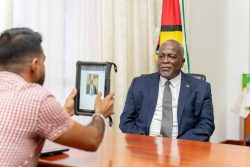VATICAN CITY (Reuters) – With every day Pope Francis reigns, his style reveals more contrasts with his predecessor Benedict in ways that amount to an unspoken criticism of how the retired pontiff conducted his papacy.
The enthusiasm former Cardinal Jorge Bergoglio has ignited among Catholics by approaching the job like a parish priest rather than a papal monarch points to a yearning for a leader the Church has not seen since the charismatic Pope John Paul II.
Six days are a short time to judge a papacy on, but the approval for Francis seem to show this is closer to what many Catholics want in a pope.
“Bergoglio represents the road not taken eight years ago,” said Italian theologian Massimo Faggioli, who teaches at the University of St Thomas in Minneapolis.
“Benedict is a great theologian, but being pope is not about being a theologian,” he said. “I think history will see him as a pope who showed a particular side of what Catholicism is today, not as a pope speaking for the whole Church.”
Enzo Bianchi, head of Italy’s Bose monastic movement, contrasted the upbeat mood now to the embattled atmosphere in the Church only a few months ago.
“When we spoke of the Church, we did so without a smile,” he wrote in the daily La Stampa on Sunday.
“Now once again, we can look at the Church with sympathy, restore trust in an institution that seemed to many to be far-off and hardly trustworthy.”
Benedict’s papacy spoke to the Church’s long intellectual tradition, but faith also comes from the heart.
Instead of recalling a far-off professor, the new pope often speaks off the cuff – something Benedict almost never did.
Francis, who has said only positive things about his predecessor, has also impressed other cardinals by playing down the monarchical side of the papacy that Benedict embraced.
He took a Vatican bus along with them instead of a waiting limousine after his election and sat down at the next available seat at dinner rather than preside at the head of the table.
Concerned the Church’s message is not getting through, the cardinals who elected Francis clearly said before the conclave that a new approach like this was needed.
“The message of Jesus is an attractive message, but it can get all buried in our churchiness,” said Rev Thomas Reese, Jesuit author of Inside the Vatican.
A pope’s style is not a superficial issue. “The very way the pope presents himself sends a powerful message to local bishops,” said Faggioli.
Benedict was elected in 2005 partly to assure continuity after the death of Pope John Paul and partly because he seemed the best man to reform the Curia, which he failed to achieve.
Instead, he focused on restoring Catholic tradition against what he felt was a too liberal reading of reforms of the Second Vatican Council (1962-1965).
He dug deep into the Vatican’s closets to bring back ornate old vestments for important ceremonies and promoted a return of the old Latin Mass that had been sidelined by the Council’s modernising reforms.





